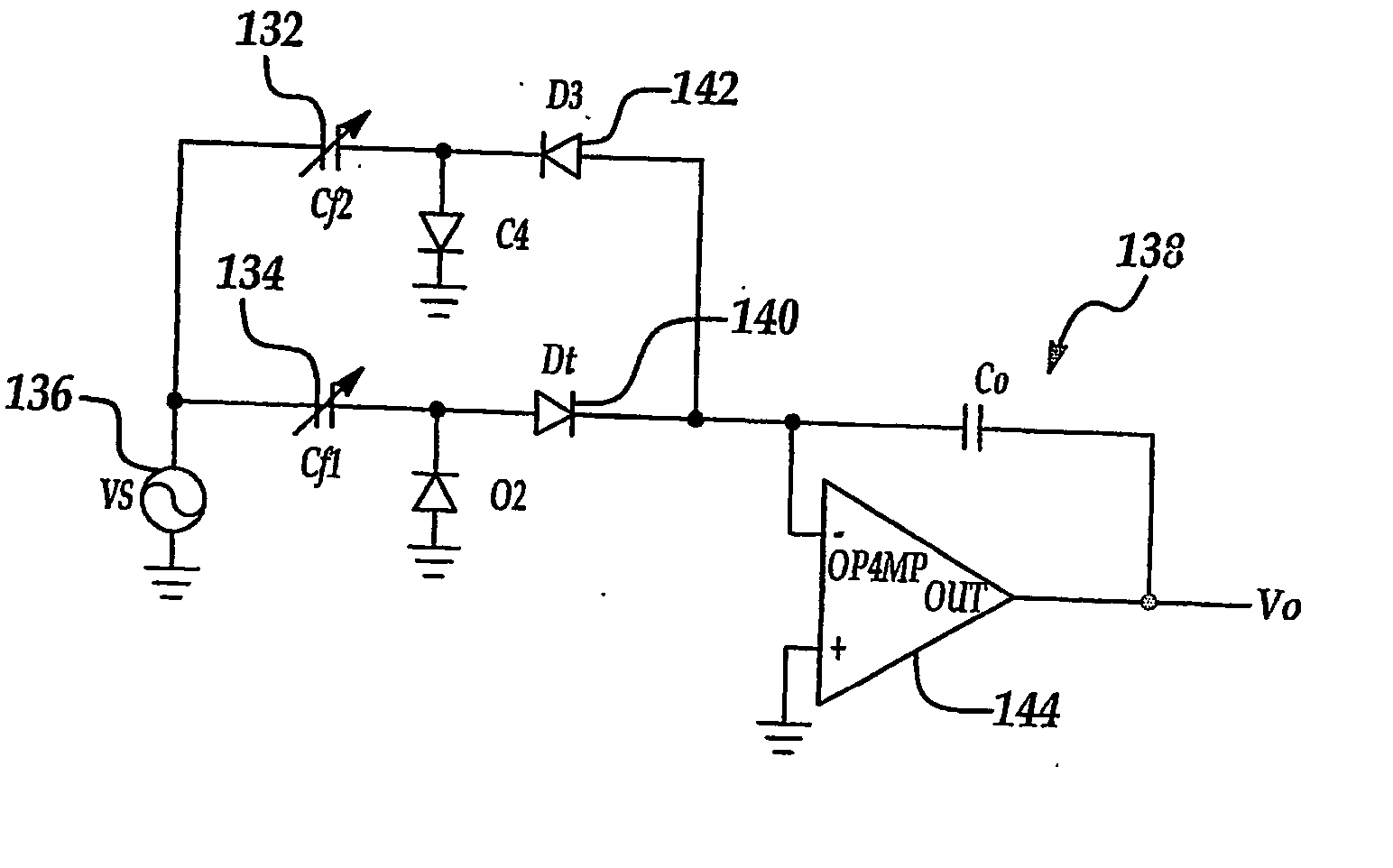Pyroelectric sensor
a technology of pyroelectric sensors and sensors, applied in the field of capacitive ferroelectric elements, can solve the problems of large limited signal-to-noise differentiation ability of sensors, and large size of focal point arrays and supporting circuits, etc., to achieve the effect of reducing the dependence on thermal isolation, superior noise-to-signal ratio and sensitivity, and being environmentally friendly and robus
- Summary
- Abstract
- Description
- Claims
- Application Information
AI Technical Summary
Benefits of technology
Problems solved by technology
Method used
Image
Examples
Embodiment Construction
[0038] The following description of the preferred embodiments directed to an active pyroelectric sensor system is merely exemplary in nature, and is in no way intended to limit the invention or its applications or uses.
[0039] Because the conventional passive pyroelectric sensor designs discussed above do not switch Ps from its initial state during interrogation, closer analysis suggests that the large energy product of the ferroelectric material identified by the hysteresis loop is not typically fully exploited by the industry. The product of the remnant polarization Pr in the fully polarized state, and the coercive electric field Ec required to remove all such residual polarization, is generally identified as the energy product PrEc. This PrEc product has the dimensions of energy density, which serves to compare the “hardness” or energy storage capabilities of such materials. Hence, by employing Ps switching, this invention proposes in-part that the entire hysteresis loop may be t...
PUM
 Login to View More
Login to View More Abstract
Description
Claims
Application Information
 Login to View More
Login to View More - R&D
- Intellectual Property
- Life Sciences
- Materials
- Tech Scout
- Unparalleled Data Quality
- Higher Quality Content
- 60% Fewer Hallucinations
Browse by: Latest US Patents, China's latest patents, Technical Efficacy Thesaurus, Application Domain, Technology Topic, Popular Technical Reports.
© 2025 PatSnap. All rights reserved.Legal|Privacy policy|Modern Slavery Act Transparency Statement|Sitemap|About US| Contact US: help@patsnap.com



